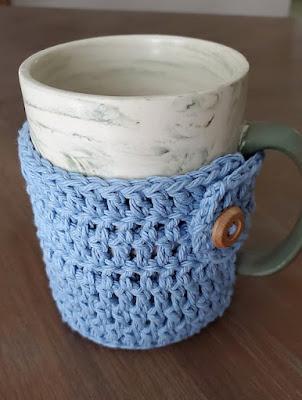I designed a gift pack of three chemo beanies in honor of my bestie and purple warrior Miss Pam, who is battling pancreatic cancer. In the photo collage above, the designs are called, from left to right, the Smooth & Simple Chemo Cap, the Sleek & Stretchy Surface Braid Chemo Cap, and the fun and funky Loopy Chemo Cap. It took a few months and a lot of work, but I finally have all the hats made (and also a Purple Power Throw blanket for some extra snuggly comfort) and ready to deliver to keep my friend warm and cozy this winter!
November is Pancreatic Cancer Awareness Month, so I'm releasing my free pattern pack on Ravelry now to give everyone an opportunity to download the patterns and get stitching on some chemo caps in time for that event.
Making and donating chemo caps to cancer patients is a charitable endeavor that is near and dear to my heart. My hope is that you will use these free patterns to donate caps to patients in need in your area as well.
In my experience, Red Heart Super Saver (and other similar acrylic yarns) can be an acceptable choice for chemo caps because even though it's stiff and scratchy when new, after running it through the washer and dryer, it comes out very soft. The machine drying step is key. (The yarn still feels stiff after coming out of the washing machine. It's only after machine drying that the yarn will soften up.) It's an individual thing whether a particular patient can tolerate the feel of the acrylic yarn. I would say for all-day wear, a natural fiber like cotton would probably feel more comfortable and breathable.
Prototypes in my photos are displayed on a 21-inch circumference wig form.
A note about sizing: My pattern instructions are based on the type of yarn (a heavy worsted/aran) and size of hook I was using, but even if you use the exact same supplies as I did, your individual tension might produce a different size finished hat. I tend to crochet tightly; if you crochet loosely, "your mileage may vary," as they say. So if you have a specific hat/head size in mind for a specific person, it's important to know what the circumference is of their head, and it's also important for you to measure the diameter of the top of your hat when you reach the end of the increasing rounds (since these are top-down patterns) to have a better estimate of the size of the finished hat before you do all the work of the sides of the hat and then end up disappointed because it turned out either too tight or too loose for the intended wearer. (You can always do the math: diameter x 3.14 = circumference.)
In the photo below of the top of my purple prototype hat with the measuring tape, you can see that the diameter at the end of my round 7 is about 6.5 inches. If you multiply that measurement by pi (3.14), it will give you the approximate circumference of the finished hat, or about 20.5 inches, in my case. Since I wanted a hat to fit a bald head that's about 21 inches in circumference, this should be just about right.
Depending on your unique tension and the yarn you're using, you might find that you need to end up with more or fewer stitches to end up with a finished hat that's the correct size for your intended wearer. Or you might be able to achieve the correct size by changing the size of hook you're using but keeping the same number of stitches mentioned in the pattern.
The nice thing about these patterns is they are very basic and easily changed to accommodate different sizes. Just keep increasing until the top of your hat reaches the diameter you need, and then stop increasing and continue working the sides of the hat at that particular stitch count. Work the length of the sides until they are as long as you need, and then finish off. My materials list and stitch counts are only a jumping-off point for you to create a hat that works for you.
Click here to download my three-pack of quick and easy chemo caps at Ravelry, and please remember to make a few to donate to your local cancer center. Thank you so much, and happy stitching!
And just for fun, here's a photo of the Purple Power Throw blanket I also made for Miss Pam:
The throw uses the stitch pattern from the Sunny Cardi pattern, except I modified it to have the rounds begin/end in a corner by utilizing the technique for beginning/ending rounds found in the Lazy Diamond Boho Pocket Shawl. I love the way it turned out. Having the rounds begin/end in the corner looks so much neater than my original version of this blanket, my I Am the Storm Throw.
Love you so much, bestie. Keep on being strong.

















































